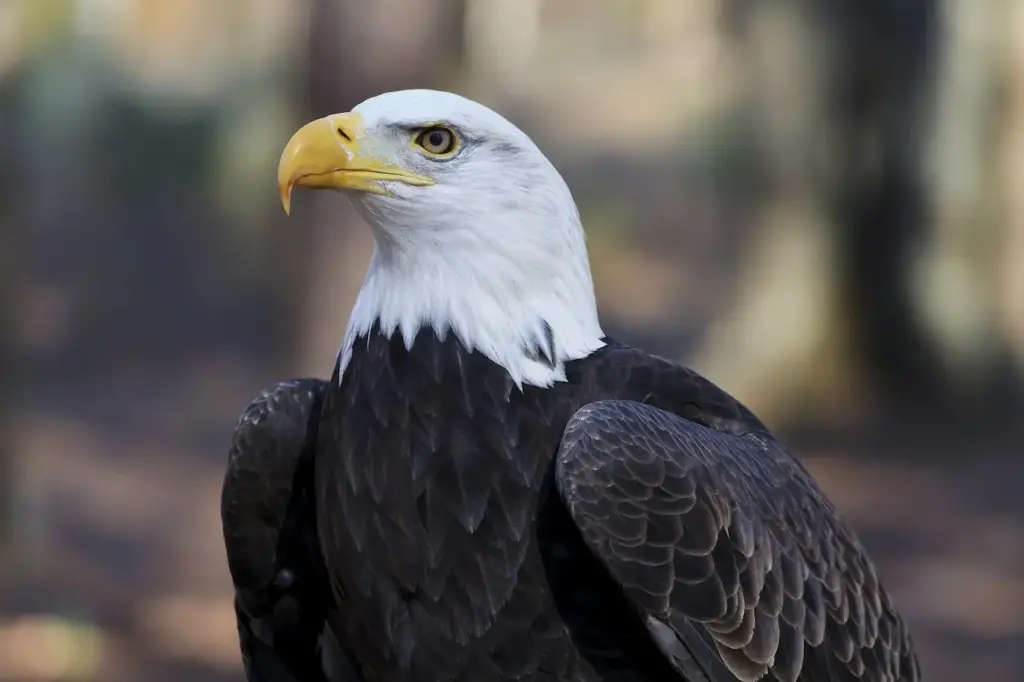Bald Eagles: Interesting Facts
In terms of size, the Bald Eagle is second only to the Andean Condor – with an impressive wingspan of about 3.3 meters (nearly 11 feet). However, there is a broad overlap in body weight and overall size with the Golden Eagle.
These powerful birds weigh up to 13.6 kg or 30 lbs and are powerful enough to pick up prey off the ground that may weigh up to 4 pounds (1.8 kg) – including small dogs.

However, eagle bones are very light as they are hollow.
The beak, talons, and feathers are made of keratin, which is also the key structural component of human hair and nails.
They were named for the white head feathers that give them a “bald” appearance from the distance, as they contrast with their otherwise mostly dark brown plumage.
Only adult adults – seven years or older – have these white feathers.
In juvenile, these feathers are mainly brown (please refer to the photos on this page featuring the second-year Bald Eagle). The plumage of these large birds is estimated to consist of about 7,000 feathers.
As the national bird of the USA and indeed the National emblem (since 1782), Bald Eagles have considerable national significance and are one of the country’s most recognizable symbols.
They appear on most US official seals, including the Seal of the President, as well as being featured on logos, coinage, postage stamps, and other items relating to the U.S. federal government.
The Bald Eagle is also considered a sacred bird in some North American cultures, and some cultures consider them spiritual messengers between gods and humans.
These powerful fliers soar on thermal convection currents allowing them to reach speeds of about 30 – 43 miles per hour (48 – 70 kilometers per hour). They can reach altitudes of ~10,000 feet (just over 3,000 meters).

Bald eagles can fly to an altitude of 10,000 feet. During level flight, they can achieve speeds of about 30 to 35 mph.
Like most raptors, the bald eagle has extraordinary vision, giving rise to the well-known terms “bird’s eye view” and “eagle eyes”!
Just for comparison, eagle eyes have about one MILLION cones (vision cells) per millimetre compared to the 200,000 cones per millimetre found in humans resulting in eyesight that is three to four times stronger than that of humans.
Bald Eagles build large platform nests out of twigs and reuse them over subsequent seasons repairing and building on them before getting started on a new clutch.
Their nests are amongst the largest ones in the world. The largest tree nest ever known for any animal was a Bald Nest in Florida, which measured 9.5 feet (2.9 meters) across, had a depth of 20 feet (6.1 meters), and weighed 5,400 pounds or 2.7 metric tons.
Only one Bald Eagle chick was ever hatched outside North America at a zoo in the German city of Magdeburg, where it made its debut on May 3, 2006.




